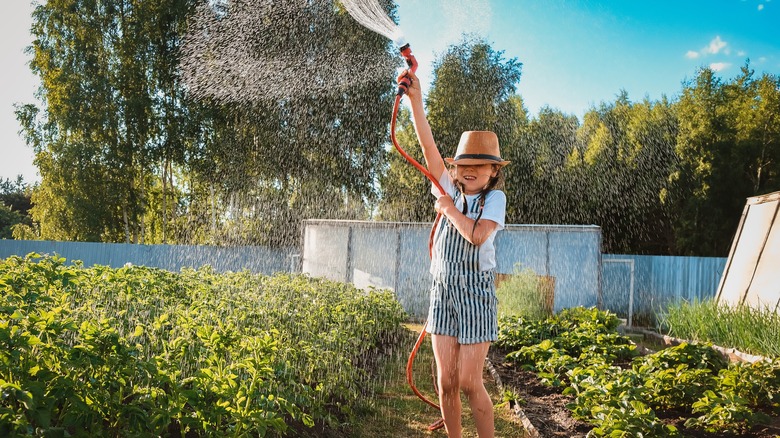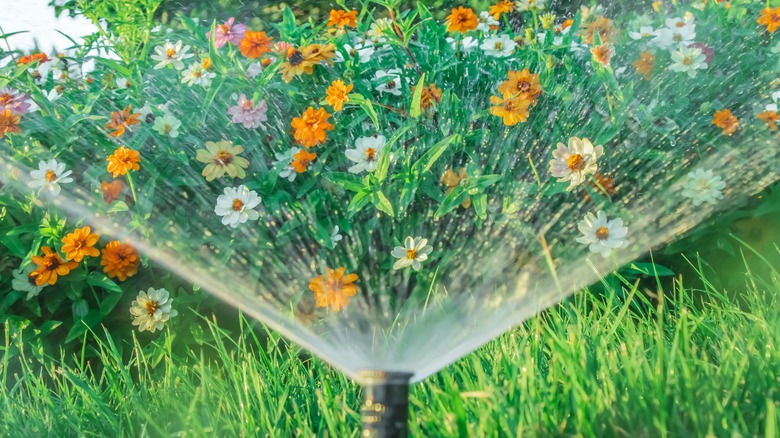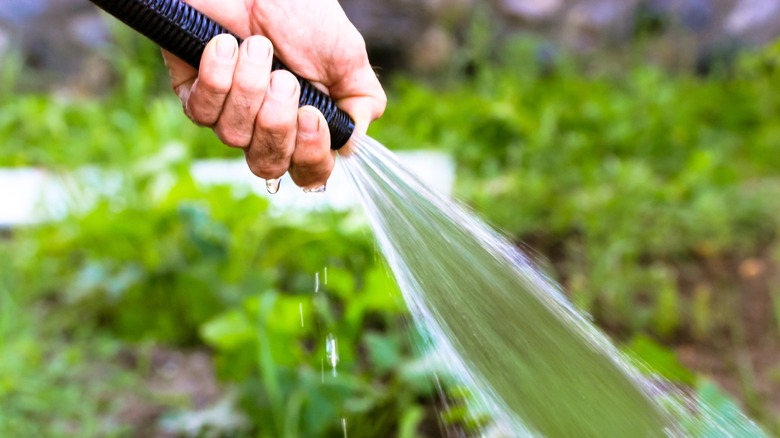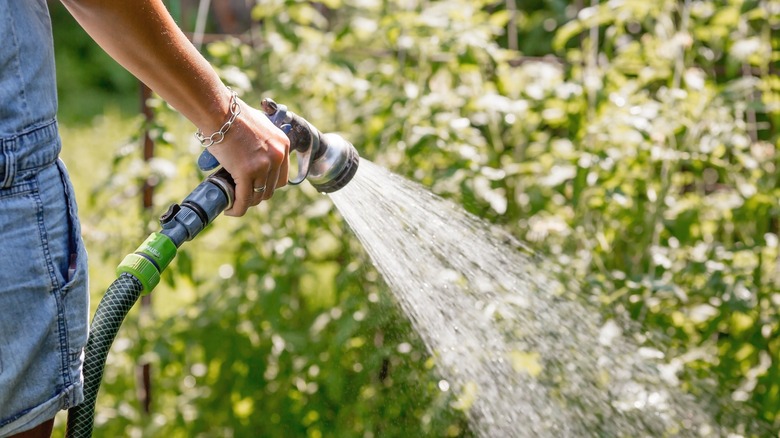Is Overhead Watering Your Garden Bad For Your Plants?
The best time to decide how to water your garden is before the hottest summer days arrive. There are so many irrigation options from which to choose: a hose-end sprayer, drip irrigation, and even several DIY options. When it comes to overhead watering, all you need is an outdoor faucet, a hose, and your choice of tool, but is this option causing more harm than good? Overhead watering can cause the spread of fungal issues, physical damage, and uneven watering in some situations.
This irrigation practice involves watering from above and wetting the entire plant instead of applying moisture directly to the soil. One method is using a hose-end sprayer for containers, and very small raised beds, but those with more than a few planters may want something that can cover a larger area. Overhead sprinklers are a popular option because they are inexpensive and range in size that cover a few square feet to over 2,000 square feet. Connected sprinkler systems are also available if you want to make a more significant investment in your garden. However, before you spend money on an overhead watering system, it's important to be aware of all the issues it can cause.
Evaporation
There are many factors that determine the amount of moisture that is lost to evaporation from overhead watering. The kind of system you use, heat, humidity, and wind are just a few variables that impact how much water your plants actually receive using this method. On a hot, dry, windy day in July, significantly more water will evaporate before soaking into the ground than on a cool spring morning. While the amount will change based on environmental factors, what does not change is that some degree of evaporation will occur. That is not great for your water bill. More importantly, this extra demand is environmentally harmful in areas experiencing drought conditions.
We have discussed the causes of evaporation, but how does that affect your plants? As water comes down from overhead and evaporates before reaching the ground, it's difficult to ensure enough water is soaking deeply into the soil where it can be accessed by plant roots. Even if you run your sprinkler long enough to make puddles in your garden, it takes a while for it to be absorbed into the ground. When too much water evaporates from the surface due to hot, dry weather, it may not reach your plant's roots, causing leaves and fruits to dry out.
Physical damage
Water pressure is an important factor in preventing damage to your plants. This is a particular concern with young seedlings whose stems can easily be broken by a heavy stream of water, but any plant can be damaged by too much water pressure. If you are using a hose-end sprayer, avoid settings like "jet" and select the "shower" option instead. The jet setting is great for cleaning off your patio furniture, but unless you want to remove all the petals off your flowers at once, it's best to select a gentle spray.
Overhead sprinklers placed too close to plants can also do a lot of damage. Since these overhead watering options are made specifically to spread water over a large distance, it makes sense that the water pressure at the exit point will be strong. Try to place your sprinkler a few feet from plants on either side. Another option is to use a setting that does not go all the way to the ground, keeping the water pressure from hitting plants directly.
Inconsistency and fungal issues
Unlike a soaker hose or similar system, overhead watering makes it difficult for all your plants to receive a consistent amount of water. Overhead sprinklers provide more water to the plants closest to the distribution area. The further moisture has to travel, the more likely it will evaporate. Many sprinklers also function in a way that the water is more concentrated when it is disbursed and spreads out as it moves back and forth. This makes for a pretty display, and it's super fun for playing, but it does not water plants evenly. The plants in the back of your garden may not get enough water, while those closest to your overhead system may get too much.
Another big challenge in the garden is dealing with fungal issues on plants. One of the most common problems in garden plants is blight on tomatoes caused by fungal spores in the soil. As water hits the soil's surface, those spores splash onto lower leaves. If you do not remove those affected parts immediately, the disease spreads through the plant, affecting leaves and fruits. Of course, you can not stop water from above entirely since that's where rain comes from, but overhead watering can speed up the spread of blight. Keeping a few inches of mulch on the soil around tomatoes can help reduce the occurrence of blight considerably.



